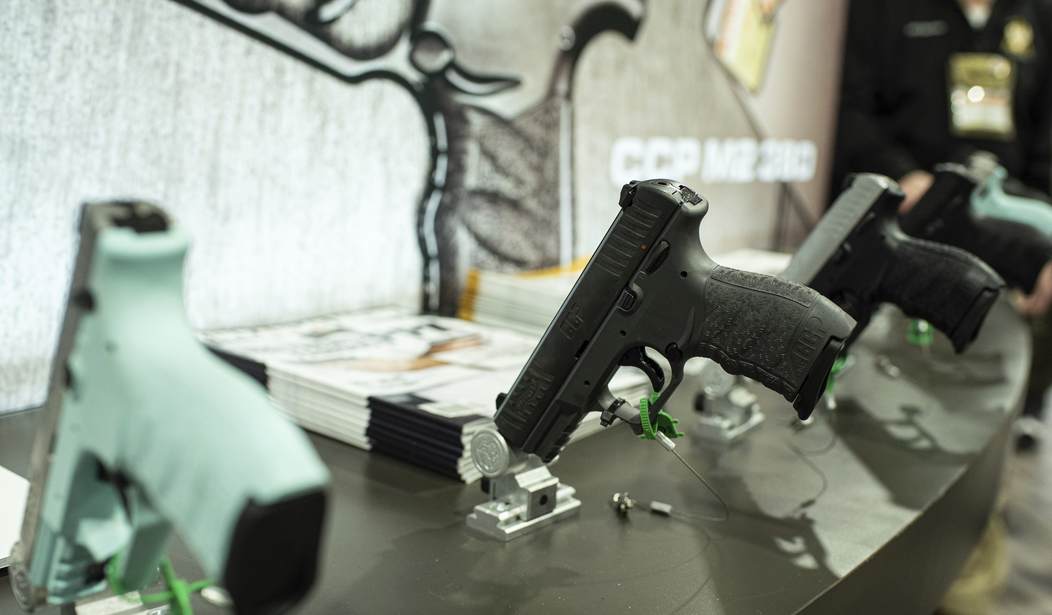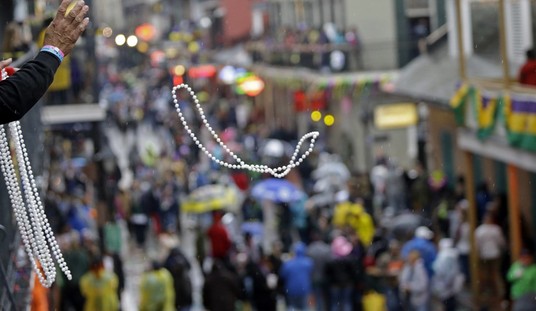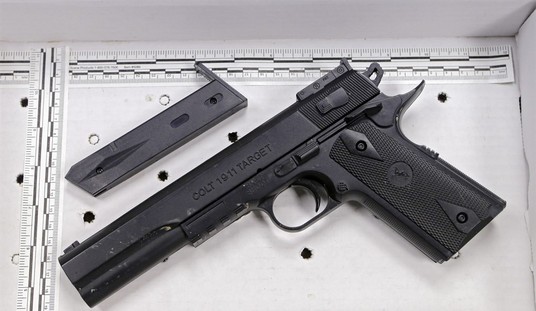I’ve never heard of Dominic Erdozain before running across his recent editorial that argues America has been overtaken by a “political experiment, conjured and contrived by a militant minority” that places more value on owning firearms than human life, but my guess is that he’ll be getting a fair amount of attention in the coming weeks in advance of the release of his book “One Nation Under Guns: How Gun Culture Distorts Our History and Threatens Our Democracy”. The media just can’t resist the argument that there’s something wrong with gun owners, and based on Erdozain’s new column at CNN, they’ll be falling all over themselves to promote him and his half-baked revisionist history.
According to Erdozain, today’s violent crime is virtually unparalleled in U.S. history and is the direct result of the right to carry movement; something the historian claims was abhorrent to Americans just a few decades ago.
Most Americans of the mid-20th century abhorred the concept of “preparatory armed carriage” and shuddered at the sight of a gun in public. Regulations against “going armed” were as old as the republic and staples of common law. Shotguns and hunting rifles were widely owned but handguns were feared and despised.
In 1959, nearly 6 out of 10 Americans favored a total ban on handguns, and only 16% of American households contained such a weapon, many of them in the South.
In 1969, the National Commission on the Causes and Prevention of Violence recommended drastic measures to reduce the number of handguns in circulation, then estimated at 24 million.
“I am one of those persons who believe that violence and instruments of violence breed violence,” said Marvin E. Wolfgang, a professor of criminology who co-directed the task force on firearms. “If pushed to the wall, I would probably support the Japanese ruling that no one except a police officer should be allowed to possess or carry a pistol.”
The chairman of the commission, Milton S. Eisenhower, wanted to recommend a ban, settling instead on a policy of rigorous and selective licensing. Federal law, advised the commission, “should not consider normal household protection a sufficient showing of need to have a handgun.”
The problem did not go away, and Republican President Richard Nixon was among those who favored a ban. “I don’t know why any individual should have a right to have a revolver in his house,” he growled to aides in 1972. Never mind licensing; why “can’t we go after handguns, period?” he wondered. The National Rifle Association would be against it. The gun makers would be against it. But “people should not have handguns,” he insisted, with the usual stream of profanities. “Guns,” he once said, “are an abomination.”
And yet, for all the supposed support for a gun ban that Erdozain claims existed back in the 1960s, there was no national ban on handguns enacted. In fact, only a handful of localities like Madison, Wisconsin and Washington, D.C. imposed handgun bans in the 1970s, with Chicago following suit in the early 80s.
Erdozain cites a 1959 Gallup poll that found 60 percent of respondents in favor of a handgun ban, but neglects to mention that support was already starting to crater just a few years later. When Gallup asked that same question in 1965 support for a handgun ban had fallen to 49 percent with 44 percent opposed, and by 1975 the poll found 55 percent opposed with only 41 percent in support. It’s been almost 60 years since Gallup found anything close to a 50-50 split on the question, and over the past 50 years support for a ban has ranged from a high of 43 percent in 1991 to a low of 19 percent in 2021.
According to Erdozian’s version of history, however, the shift in thinking on banning handguns didn’t start in the 1960s, but two decades later.
What changed? The short answer is President Ronald Reagan, whose crisp, Cold War thinking reduced domestic policy to a series of simple choices. Good and evil. Light and darkness. Arm the righteous, he promised, and crime will take care of itself. It was a “nasty truth,” he said, but criminals were not fazed by gun laws. The answer was to make firepower accessible to the good people: the silent majority who sustain the nation. The good guys, who never miss.
For the new conservative, guns were more than weapons: they were symbols of Americanism and vehicles of destiny. With Reagan’s arrival in the White House in 1981, the conversation shifted from controlling guns to “protecting” gun owners. Reagan embraced a militant NRA and pressed on with a “bill of rights for America’s gun owners,” against the recommendation of his own task force on violent crime.
“Only a madman could look at the problem we have in this country,” wrote Michael Beard, head of the National Coalition to Ban Handguns, “and then say that what this country needs is to weaken our handgun control laws.” But that was the agenda in 1984.
When Florida passed one of the nation’s first concealed carry laws the following year, Gov. Bob Graham, a Democrat, vetoed it as a policy pregnant with danger. “People could have come armed into shopping centers, movies and school yards,” a relieved and indignant senator said. Very soon they would.
When Texas passed a similar law in 1993, Democratic Gov. Ann Richards vetoed it with simmering rage. “On this day,” she declared, “we say no to the amateur gunslingers who think they will be braver and smarter with gun in hand.” The people of Texas, she had long argued, “do not need to be reminded that weapons of violence produce death to innocent children and adults.” The only conceivable outcome of the bill would be that more people would be “killed by gunfire.”
But this was no longer a debate. It was a culture war, in which facts were optional and reality negotiable. Opposition to the concealed weapons bill cost Richards the next election, and her successor, George W. Bush, duly signed it into law. “This is a bill to make Texas a safer place,” he said, with uncertain gravity. A new era had begun.
Erdozian’s entire thesis is that concealed carry has made the United States a more dangerous place, but the truth is that violent crime was far higher both nationally and in states like Florida and Texas before “shall issue” carry laws came into being. In 1985, for example, Florida’s homicide rate was 11.4 per 100,000 people. By 1997, ten years after shall-issue concealed carry took effect the state’s homicide rate had declined to 6.9 per 100,000. In 2021 Florida’s homicide rate had ticked back up to 7.4 per 100,000, but that was in the midst of a nationwide crime spike that began in 2020.
Nationally, however, the nation’s homicide and violent crime rates dropped by more than 50 percent between their historic highs in the early 1990s and the start of the COVID crime spike in 2020, and even with that increase in 2020 the rates of violence are still far lower than what they were just a few decades ago. Erdozian tries to get around this inconvenient truth by citing the total number of homicides and gun-related offenses, which have increased in many cases, but only because the population of the United States has increased as well.
This is far from the only problem with Erdozian’s premise. He willfully conflates machine guns with semi-automatic firearms and trots out the nonsensical claim that no right to keep and bear arms existed in the United States before the Supreme Court struck down D.C.’s ban on handguns fifteen years ago.
This is not freedom. It’s the unraveling of the American promise of peace and “domestic tranquility.” And whatever the Supreme Court decides in the gun case now under consideration, the history cannot be denied: This “constitutional right” to own a gun for self-defense is another product of our times — a right unknown before the “dramatic upheaval” of the District of Columbia v. Heller decision of 2008.
The United States is far safer today than it was fifty years ago, no matter how much the gun control lobby and their allies in the media and academics pretend otherwise. And the Second Amendment has protected an individual right to keep and bear arms from the get-go, as any fair reading of U.S. history shows. To provide just one example, here’s attorney Kostas Moros’s thread of 19th century commentary on the Second Amendment.
This thread covers 19th century views on the Second Amendment. It's a revised version of a prior thread, with the biggest change being the links to most of the sources, as well as some corrected typos.
This first excerpt is from William Rawle.https://t.co/Zyy0zgajy9 pic.twitter.com/FIpWcfbQJ9
— Kostas Moros (@MorosKostas) April 10, 2023
Something tells me that Moros and his research aren’t going to be cited in Erdozian’s book, which might end up being the most fantastical bit of Second Amendment history since Michael Bellesiles’ discredited “Armed America” was released more than twenty years ago. I’ll reserve my final judgment until I’ve had a chance to read the book in its entirety, but based on his CNN column I can’t imagine it’s going to be anything more than another anti-gun screed dressed up in the trappings of academia.








